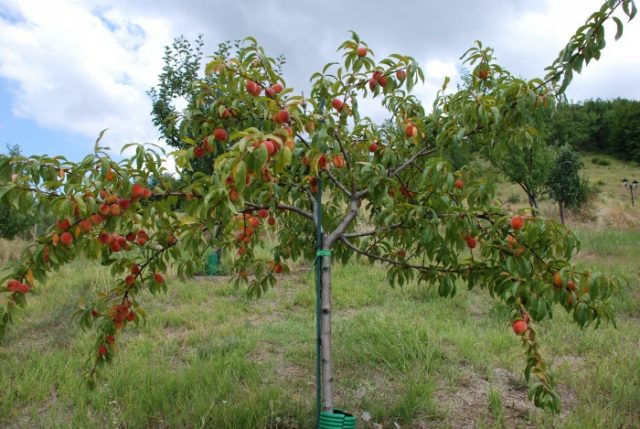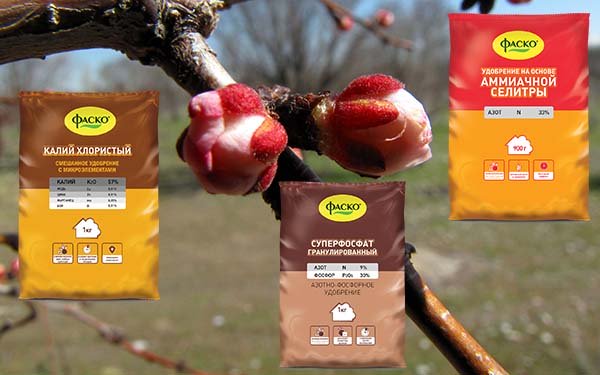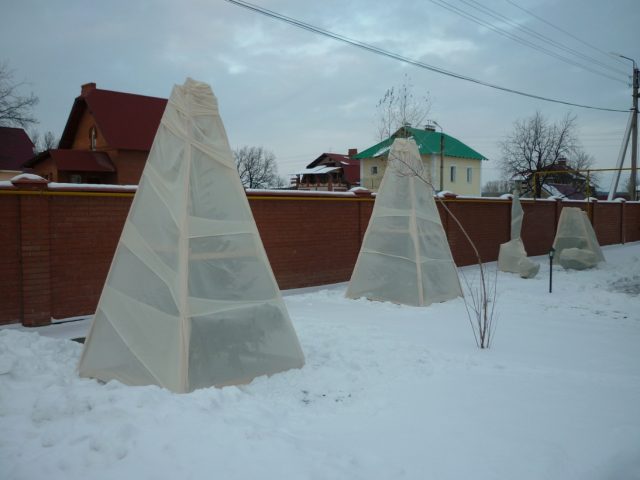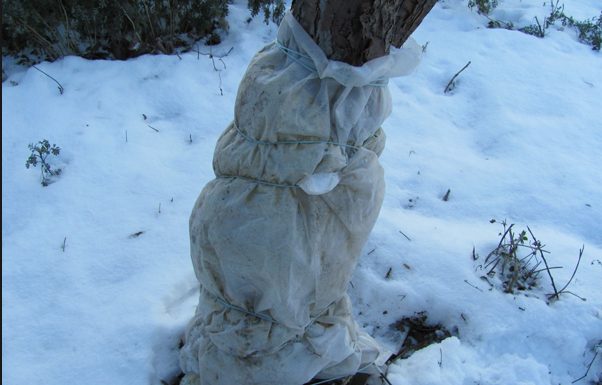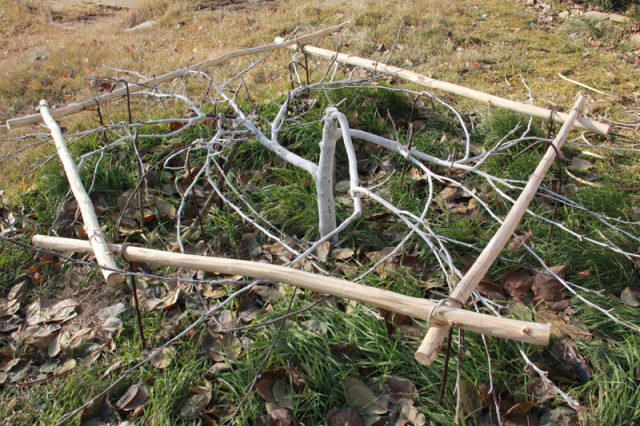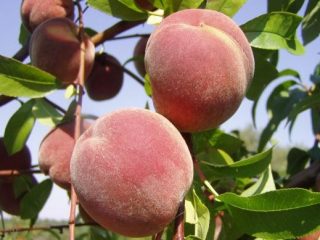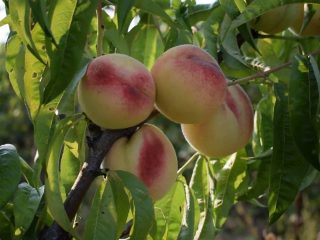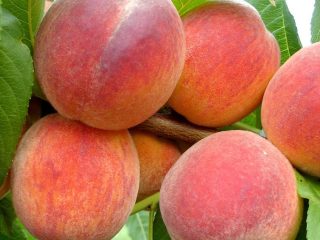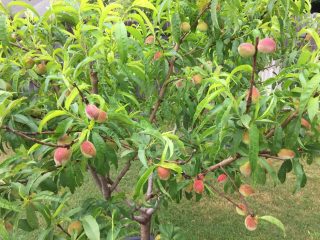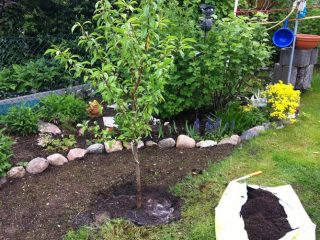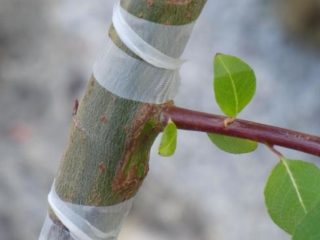Content
Peach care is not an easy task. The tree is thermophilic, therefore it reacts sharply to temperature changes. Peaches are cultivated in subtropical countries. But thanks to the emergence of new frost-resistant varieties, fruit cultivation has become possible in our latitudes. In order for the fruiting to be regular and abundant, you should take care of the peach all year round. Compliance with agrotechnical measures, care rules will allow you to get ripe fruits even in Siberia.
How to care for a peach
A large amount of maintenance work in the process of growing peaches falls in the spring. After wintering, the tree needs to recover and go into the growing season. The main stages of peach care.
- Sanitary pruning... The procedure is carried out with the arrival of heat, when the air temperature is not lower than + 5 ° C. If the winter was frosty, then you should not rush. Gardeners advise to postpone pruning until the peach begins to grow actively. Then it will be possible to more accurately determine the degree of crown frostbite. If the peach is badly damaged, then it should be trimmed in stages. Removing all frostbitten branches at the same time will reduce immunity. Cut off dry, broken, frostbitten branches. The spring care procedure helps to form the upper part of the seedling, renew the crown of mature trees. The procedure contributes to the optimal distribution of nutrients, improving fruiting, maintaining a balance between the crown and the root system.
- Graft... In March or early April, peach grafting is performed. Plum, apricot, cherry plum are considered the best stock. Do not vaccinate after spraying the leaves with fungicides or insecticides. The method of vaccination is chosen by the gardener himself, depending on experience.
- Treatment against diseases and pests... When growing a peach, this point must be given due attention. After all, a diseased plant will not be able to fully grow and bear fruit. Preventive treatment for infections and pests can be combined.
Time and method of comprehensive protection:
- in March - whitewashing of trunks;
- the moment the buds appear - spraying the branches;
- budding - processing of the crown;
- after flowering - spraying the foliage.
How often to water the peach
Excess and lack of fluid equally lead to the death of the peach. Therefore, watering the fruit tree is carried out in moderate doses, but regularly. Lack of moisture during active growth will lead to the development of weak, deformed leaf plates, slow down the process of photosynthesis, and not all buds will hatch after winter.
The number of water procedures for the growing season: for early varieties 2-3, for late varieties - up to 6 times. Use 3-5 buckets of clean water at a time. The amount of depending on the age of the fruit crop:
- for a one-year or two-year-old peach, the required volume of water is 15 liters per 1 sq. m of the area of the trunk circle;
- if the tree is older than two years - 20 liters per 1 sq. m of the area of the trunk circle.
The first time after wintering the peach tree is moistened at the end of May. Especially if the winter was not snowy, but spring without rains. The rest are held twice in summer, in July and August. During the ripening period, the peach should not be watered.About 3 weeks before the expected harvest, you should stop wetting the tree. Otherwise, the fruits will lose their sugar content and become watery.
The procedure itself is best done in the early morning or evening. It is important that the water reaches the roots, the depth is 60-70 cm. First of all, grooves are made around the perimeter of the peri-stem circle. The depth of these ditches is 7-10 cm. One furrow is enough for a young plant. For older trees, 2-3 grooves are formed. The distance between them is 30-40 cm.
In autumn, water-charging watering is performed - this is an important stage in peach care. As the procedure increases the frost resistance of the peach. For 1 sq. m of the area of the trunk circle will require 1 bucket of water.
Soil loosening and weed control
Site preparation and peach care begins with leveling the ground, removing large stones and bushes, and digging the ground. The land is cultivated at 70-80 cm. Fertile soils are cultivated to a depth of 40-50 cm. In order to provide the soil with air, the soil is loosened. This peach care routine allows you to:
- reduce the risk of fungal diseases in high humidity conditions;
- renew the layer of waste soil;
- destroy soil crusts;
- eliminate weed roots.
It is recommended to loosen the substrate after each moistening. For peach care tools, you need a hoe, hoe, or rake. The loosening procedure reduces moisture evaporation from the ground, increases water absorption.
How to feed a peach tree
The peach needs additional feeding every year. The amount and composition of chemicals depends on the fertility of the soil. If the tree is planted in poor land, then organic and mineral substances need to be introduced. If the soil is fertile, then only the latter will be enough. Organic fertilizers are added to the substrate every 3 years.
- In March, before the buds swell, the fruit culture is treated with a 7% urea solution. The mineral compound fills the plant with nitrogen, stimulates the growth of green mass, destroys fungal infections that hibernated in the bark. However, if the buds have blossomed, the nitrogenous solution will burn them.
- If spraying was not done in a timely manner, then the work of caring for the peach can be replaced with root feed. Urea 50 g per 1 square meter is added to the freshly loosened soil. m or 70-80 g of ammonium nitrate. Spread the substances into the grooves of the periosteal circle. Every 2-3 years, increase the dosage by 20 g.
- In the summer, the peach is fed by sprinkling the crown. For this procedure, a solution is suitable: 40 g of urea, 50 g of ammonium nitrate, 60-80 g of potassium sulfate, 60 g of ammonium sulfate, 50 g of calcium chloride, 150 g of an aqueous solution of superphosphate, 10 g of borax, 15 g of manganese. When fruits ripen on trees, the last two components should be removed.
- For a rich color and increased sugar content, foliar treatments are connected: 30 g of potassium salt per bucket of water.
How to feed a peach after fruiting
In autumn, the peach also needs care, in particular, feeding. Fertilizers are applied to the near-stem furrow. It is recommended to choose mineral complex products and organic substances. Dosage for aged peach tree:
- 1-2 years - you need 10 kg of compost or manure, 80 g of superphosphate, 30 g of potassium salt;
- 3-6 years - 15 kg of manure, 60 g of ammonium nitrate, 100 g of superphosphate, 50 g of potassium salt are required;
- 6-8 years - you need 30 kg of manure, 130 g of ammonium nitrate, 100 g of potassium salt;
- adult trees will need 30 kg of manure, 120 g of ammonium nitrate, 100 g of potassium salt.
Preparing peaches for winter
Gardeners carefully tend the peach tree throughout the season. However, for maintaining the health of the culture, autumn care works are equally important.
Digging and mulching of the periosteal circle.In order for the peach to easily endure the wintering period, it is necessary, in addition to the planned care measures, to cultivate the land. Deep loosening of the soil will get rid of harmful insects in it. Digging should be at least 10 cm from the surface and at a distance of half a meter from the trunk. Under these conditions, the root system will remain intact.
After digging, they proceed to the next care procedure - mulching the periosteal circle. The main purpose of this type of care:
- retention of moisture in the soil;
- additional food for the tree;
- inhibiting the growth of weeds;
- giving a decorative look to the trunk circle.
Used as mulch: crushed pine bark, sawdust, peat, hay, straw. The thickness of the layer is 5-10 cm. To prevent the natural components from rotting, air circulation is necessary. This is achieved by keeping the distance from the trunk to the mulch.
Shelters of the tree for the winter. Peaches are very afraid of cold weather. A sudden change in temperature can destroy the plant. In order for a tree to survive the winter without loss, shelter is required. After flying around the foliage, when the temperature outside has not yet dropped below 0 ° C, the seedlings are bent to the ground. They are pegged, but you need to be careful with fragile shoots. It is better to cut off old branches, treat the places with garden pitch. Top the peach covered with an airtight material.
The crown of an adult tree, which can no longer be bent, is wrapped in material. The main thing is that the fabric is not dense, otherwise the care event will not give positive results. In the absence of air, the peach dries up.
Rodent protection. In addition to cold weather, peaches are saved from rodents in winter. The first method: the stem and low-growing branches are wrapped in various materials. A mesh, spruce branches, roofing material are well suited. The second method of peach care involves the use of chemicals. The repellent mixture consists of fish oil and naphthalene in a ratio of 8: 1, respectively.
Autumn spraying. One of the components of peach care after fruiting is protection from enemies, diseases and parasites. It is in the fall that fungal spores are activated. Processing will help kill infections so that they do not spread throughout the tree by spring.
Features of growing peaches in different regions:
Growing a peach in a summer cottage in the suburbs does not surprise anyone. However, this is not done by enthusiasts, but by gardeners with many years of experience. Since the process of growing and caring for a fruit tree involves a number of subtleties.
In outskirts of Moscow
The climate in the Moscow region is temperate continental, with relatively warm winters, humid summers and frosts in the spring. For these weather conditions, it is important to choose the right peach variety. The best representatives of peaches for cultivation in this region are characterized by:
- early or mid-early fruiting;
- resistance to low-temperature conditions in winter;
- the ability to withstand return spring frosts.
As a rule, seedlings for the Moscow region are sold in local nurseries. Subject to the technologies of cultivation and care, the peach will ripen without problems in the Moscow region in the open field. It is recommended to apply such agrotechnical measures and methods of caring for a peach.
- In autumn, before wintering, cut out the tree conductor, leaving only 4 lower shortened shoots.
- Mandatory mulching of the trunk circle for the winter.
- Provide a secure shelter for the peach in the form of spruce, burlap, foliage.
- Arrange regular watering during dry summers. Water young seedlings more often than an adult tree.
- The standard rate of fluid for one tree is 50 liters.
- Nitrogen-containing preparations are used as top dressing, which stimulate the rapid appearance of green mass.
- Potassium-phosphorus fertilizers are applied in summer and autumn.
The climatic features of the Moscow region suggest: care and preparation of peaches for wintering, proper shelter for plantings.Trees need to be insulated after feeding, bending them to the ground.
In Central Russia
Peaches are not picky about the composition of the soil. But at the same time, good aeration and low soil acidity are important. When growing a peach in Central Russia, you need to choose sunny, wind-protected places. The best option is the plot located on the south side of the building.
It is recommended to plant seedlings and care in early spring, before the buds swell. They must have time to acclimatize in a new place, take root and start growing after spring frosts.
An important criterion for the safety of a tree in Central Russia is the correct shelter for wintering. Fruit buds tolerate frost down to - 27 ° C. If the temperature indicators fall below, then it is pointless to wait for flowering in spring. The tree resists temperatures down to -35 ° C.
In order not to jeopardize the health of the peach, you should take care of a reliable shelter. The material used is dry tops, straw, dry grass. Cover with roofing material or polyethylene from above. The third layer is snow 20-25 cm thick. If it is not there, you can use sawdust bags.
In Central Russia, a peach tree is grown in greenhouses with grapes. Or they make special houses out of plywood.
In Siberia
Caring for a peach before and after harvesting means: regular watering, but not more often than 1 time in 7 days, mulching the near-stem circle with sand or humus with a layer of 5-8 cm, removing weeds. For the first 3 years after planting, it is not advised to feed the fruit tree. It is necessary to exclude nitrogen fertilizers, which reduce the frost resistance of the crop.
Wintering involves hiding the peach. A homemade wooden frame covered with foil is perfect. Until it's cold outside, the ends remain open. At temperatures below -7 ° C, the shelter is covered from above with roofing felt, the ends are sealed. If snow falls, then it is thrown onto the frame. It is necessary to ensure that the snow remains on the roof, if necessary, cover it with branches or boards.
The roof over the peach is not dismantled until the end of the spring frost. Open the sides for ventilation. Autumn sprinkling with a solution of Bordeaux liquid helps the peach to endure the winter well in Siberia. The skeletal branches of the tree are whitewashed.
After removing the frame, cut dry, frostbitten, broken shoots. Remove shoots that thicken the crown or give a small increase. Thanks to the shelter, the growing process of the peach is delayed, and it blooms after May 20. Then return frosts for inflorescences are no longer scary. Thus, the care and cultivation of peaches in Siberia becomes possible, taking into account the choice of a frost-resistant variety.
Conclusion
Peach care is divided into a number of basic steps, the implementation of which leads to the desired yield. Growing a tree is like real art. The gardener learns from others' and his own mistakes. Constantly improving in the process of growing peaches. Caring for a fruit tree is becoming an interesting occupation, which is picked up by enthusiasts not only in the southern, but also in the northern regions of the country.
